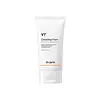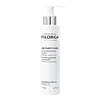What's inside
What's inside
 Key Ingredients
Key Ingredients

 Benefits
Benefits

 Concerns
Concerns

 Ingredients Side-by-side
Ingredients Side-by-side

Myristic Acid
CleansingWater
Skin ConditioningPotassium Hydroxide
BufferingStearic Acid
CleansingPropylene Glycol
HumectantPotassium Cocoyl Glycinate
Cocamide
EmulsifyingEDTA
Lauric Acid
CleansingDecyl Glucoside
CleansingSodium Lauroyl Glutamate
Portulaca Oleracea Extract
Skin ConditioningCitrus Grandis Peel Extract
AstringentPiper Methysticum Leaf/Root/Stem Extract
Skin ConditioningAloe Barbadensis Leaf Extract
EmollientAlthaea Rosea Flower Extract
Skin ConditioningLavandula Angustifolia Oil
MaskingSodium Hyaluronate
HumectantHydrogenated Lecithin
EmulsifyingSorbitan Olivate
EmulsifyingPolyquaternium-7
Tocopheryl Acetate
AntioxidantDisodium EDTA
Niacinamide
SmoothingRetinol
Skin ConditioningBiotin
AntiseborrhoeicAcetyl Glucosamine
Skin ConditioningAscorbyl Glucoside
AntioxidantAzelamide Mea
Panthenol
Skin ConditioningPolyquaternium-51
Skin ConditioningSteareth-20
CleansingPalmitoyl Tetrapeptide-7
Skin ConditioningHesperidin Methyl Chalcone
AntioxidantN-Hydroxysuccinimide
Skin ConditioningDipeptide-2
Skin ConditioningChrysin
Skin ConditioningTocopheryl Linoleate
AntioxidantPalmitoyl Oligopeptide
CleansingBHT
AntioxidantCeramide NP
Skin ConditioningSqualane
EmollientCholesterol
EmollientParfum
MaskingMethylparaben
PreservativePhenoxyethanol
PreservativeButylparaben
MaskingMyristic Acid, Water, Potassium Hydroxide, Stearic Acid, Propylene Glycol, Potassium Cocoyl Glycinate, Cocamide, EDTA, Lauric Acid, Decyl Glucoside, Sodium Lauroyl Glutamate, Portulaca Oleracea Extract, Citrus Grandis Peel Extract, Piper Methysticum Leaf/Root/Stem Extract, Aloe Barbadensis Leaf Extract, Althaea Rosea Flower Extract, Lavandula Angustifolia Oil, Sodium Hyaluronate, Hydrogenated Lecithin, Sorbitan Olivate, Polyquaternium-7, Tocopheryl Acetate, Disodium EDTA, Niacinamide, Retinol, Biotin, Acetyl Glucosamine, Ascorbyl Glucoside, Azelamide Mea, Panthenol, Polyquaternium-51, Steareth-20, Palmitoyl Tetrapeptide-7, Hesperidin Methyl Chalcone, N-Hydroxysuccinimide, Dipeptide-2, Chrysin, Tocopheryl Linoleate, Palmitoyl Oligopeptide, BHT, Ceramide NP, Squalane, Cholesterol, Parfum, Methylparaben, Phenoxyethanol, Butylparaben
Water
Skin ConditioningGlycerin
HumectantDisodium Cocoyl Glutamate
CleansingGluconolactone
Skin ConditioningCocamidopropyl Betaine
CleansingNiacinamide
SmoothingSodium Citrate
BufferingXanthan Gum
EmulsifyingSodium Hydroxide
BufferingPropanediol
SolventSodium Chloride
MaskingSodium Cocoyl Alaninate
Zinc Gluconate
Skin ConditioningParfum
MaskingTrehalose
HumectantUrea
BufferingCaprylyl Glycol
EmollientCitric Acid
BufferingGlycolic Acid
BufferingAzelaic Acid
BufferingMandelic Acid
AntimicrobialSucrose Palmitate
EmollientSerine
MaskingPentylene Glycol
Skin ConditioningMaltodextrin
AbsorbentBixa Orellana Seed Extract
MaskingGlyceryl Linoleate
EmollientSodium Hyaluronate
HumectantPrunus Amygdalus Dulcis Oil
Skin ConditioningAlgin
MaskingDisodium Phosphate
BufferingGlyceryl Polyacrylate
Pullulan
Hydrolyzed Wheat Flour
Skin ConditioningGlucose
HumectantPhenoxyethanol
PreservativePotassium Phosphate
BufferingPotassium Chloride
CI 61570
Cosmetic ColorantPotassium Sorbate
PreservativeCalcium Chloride
Astringent1,2-Hexanediol
Skin ConditioningMagnesium Sulfate
Glutamine
Skin ConditioningDipeptide Diaminobutyroyl Benzylamide Diacetate
Skin ConditioningSodium Phosphate
BufferingCI 19140
Cosmetic ColorantAscorbic Acid
AntioxidantSodium Acetate
BufferingTocopherol
AntioxidantLysine Hcl
Skin ConditioningArginine Hcl
Skin ConditioningAlanine
MaskingHistidine Hcl
Skin ConditioningValine
MaskingLeucine
Skin ConditioningThreonine
Isoleucine
Skin ConditioningTryptophan
MaskingPhenylalanine
MaskingTyrosine
MaskingGlycine
BufferingPolysorbate 80
EmulsifyingCystine
MaskingCyanocobalamin
Skin ConditioningGlutathione
Asparagine
MaskingAspartic Acid
MaskingOrnithine Hcl
Skin ConditioningGlutamic Acid
HumectantNicotinamide Adenine Dinucleotide
Skin ConditioningProline
Skin ConditioningMethionine
Skin ConditioningTaurine
BufferingHydroxyproline
Skin ConditioningGlucosamine Hcl
Coenzyme A
Skin ConditioningSodium Glucuronate
HumectantThiamine Diphosphate
Skin ConditioningRetinyl Acetate
Skin ConditioningInositol
HumectantNiacin
SmoothingPyridoxine Hcl
Skin ConditioningBiotin
AntiseborrhoeicCalcium Pantothenate
Riboflavin
Cosmetic ColorantSodium Tocopheryl Phosphate
AntioxidantThiamine Hcl
MaskingFolic Acid
Skin ConditioningWater, Glycerin, Disodium Cocoyl Glutamate, Gluconolactone, Cocamidopropyl Betaine, Niacinamide, Sodium Citrate, Xanthan Gum, Sodium Hydroxide, Propanediol, Sodium Chloride, Sodium Cocoyl Alaninate, Zinc Gluconate, Parfum, Trehalose, Urea, Caprylyl Glycol, Citric Acid, Glycolic Acid, Azelaic Acid, Mandelic Acid, Sucrose Palmitate, Serine, Pentylene Glycol, Maltodextrin, Bixa Orellana Seed Extract, Glyceryl Linoleate, Sodium Hyaluronate, Prunus Amygdalus Dulcis Oil, Algin, Disodium Phosphate, Glyceryl Polyacrylate, Pullulan, Hydrolyzed Wheat Flour, Glucose, Phenoxyethanol, Potassium Phosphate, Potassium Chloride, CI 61570, Potassium Sorbate, Calcium Chloride, 1,2-Hexanediol, Magnesium Sulfate, Glutamine, Dipeptide Diaminobutyroyl Benzylamide Diacetate, Sodium Phosphate, CI 19140, Ascorbic Acid, Sodium Acetate, Tocopherol, Lysine Hcl, Arginine Hcl, Alanine, Histidine Hcl, Valine, Leucine, Threonine, Isoleucine, Tryptophan, Phenylalanine, Tyrosine, Glycine, Polysorbate 80, Cystine, Cyanocobalamin, Glutathione, Asparagine, Aspartic Acid, Ornithine Hcl, Glutamic Acid, Nicotinamide Adenine Dinucleotide, Proline, Methionine, Taurine, Hydroxyproline, Glucosamine Hcl, Coenzyme A, Sodium Glucuronate, Thiamine Diphosphate, Retinyl Acetate, Inositol, Niacin, Pyridoxine Hcl, Biotin, Calcium Pantothenate, Riboflavin, Sodium Tocopheryl Phosphate, Thiamine Hcl, Folic Acid
Ingredients Explained
These ingredients are found in both products.
Ingredients higher up in an ingredient list are typically present in a larger amount.
Biotin is a B vitamin that is naturally produced by our bodies. It is also called Vitamin H.
Our bodies use biotin in the metabolism process. It also helps our bodies use enzymes and move nutrients around. A biotin deficiency can lead to brittle hair and nails.
More research is needed on applying biotin topically. However, taking biotin orally has been shown to help nourish the skin, hair, and nails. They play a role in forming skin-hydrating fatty acids.
Biotin is water-soluble. It can be found in foods such as fish, eggs, dairy, nuts, and meat. Vitamin H stands for "haar" and "haut". These are the German words for hair and skin.
Learn more about BiotinNiacinamide is a multitasking form of vitamin B3 that strengthens the skin barrier, reduces pores and dark spots, regulates oil, and improves signs of aging.
And the best part? It's gentle and well-tolerated by most skin types, including sensitive and reactive skin.
You might have heard of "niacin flush", or the reddening of skin that causes itchiness. Niacinamide has not been found to cause this.
In very rare cases, some individuals may not be able to tolerate niacinamide at all or experience an allergic reaction to it.
If you are experiencing flaking, irritation, and dryness with this ingredient, be sure to double check all your products as this ingredient can be found in all categories of skincare.
When incorporating niacinamide into your routine, look out for concentration amounts. Typically, 5% niacinamide provides benefits such as fading dark spots. However, if you have sensitive skin, it is better to begin with a smaller concentration.
When you apply niacinamide to your skin, your body converts it into nicotinamide adenine dinucleotide (NAD). NAD is an essential coenzyme that is already found in your cells as "fuel" and powers countless biological processes.
In your skin, NAD helps repair cell damage, produce new healthy cells, support collagen production, strengthen the skin barrier, and fight environmental stressors (like UV and pollution).
Our natural NAD levels start to decline with age, leading to slower skin repair, visible aging, and a weaker skin barrier. By providing your skin niacinamide, you're recharging your skin's NAD levels. This leads to stronger, healthier, and younger looking skin.
Another name for vitamin B3 is nicotinamide. This vitamin is water-soluble and our bodies don't store it. We obtain Vitamin B3 from either food or skincare. Meat, fish, wheat, yeast, and leafy greens contain vitamin B3.
The type of niacinamide used in skincare is synthetically created.
Learn more about NiacinamideParfum is a catch-all term for an ingredient or more that is used to give a scent to products.
Also called "fragrance", this ingredient can be a blend of hundreds of chemicals or plant oils. This means every product with "fragrance" or "parfum" in the ingredients list is a different mixture.
For instance, Habanolide is a proprietary trade name for a specific aroma chemical. When used as a fragrance ingredient in cosmetics, most aroma chemicals fall under the broad labeling category of “FRAGRANCE” or “PARFUM” according to EU and US regulations.
The term 'parfum' or 'fragrance' is not regulated in many countries. In many cases, it is up to the brand to define this term.
For instance, many brands choose to label themselves as "fragrance-free" because they are not using synthetic fragrances. However, their products may still contain ingredients such as essential oils that are considered a fragrance by INCI standards.
One example is Calendula flower extract. Calendula is an essential oil that still imparts a scent or 'fragrance'.
Depending on the blend, the ingredients in the mixture can cause allergies and sensitivities on the skin. Some ingredients that are known EU allergens include linalool and citronellol.
Parfum can also be used to mask or cover an unpleasant scent.
The bottom line is: not all fragrances/parfum/ingredients are created equally. If you are worried about fragrances, we recommend taking a closer look at an ingredient. And of course, we always recommend speaking with a professional.
Learn more about ParfumPhenoxyethanol is a preservative that has germicide, antimicrobial, and aromatic properties. Studies show that phenoxyethanol can prevent microbial growth. By itself, it has a scent that is similar to that of a rose.
It's often used in formulations along with Caprylyl Glycol to preserve the shelf life of products.
Sodium Hyaluronate is hyaluronic acid's salt form. It is commonly derived from the sodium salt of hyaluronic acid.
Like hyaluronic acid, it is great at holding water and acts as a humectant. This makes it a great skin hydrating ingredient.
Sodium Hyaluronate is naturally occurring in our bodies and is mostly found in eye fluid and joints.
These are some other common types of Hyaluronic Acid:
Learn more about Sodium HyaluronateWater. It's the most common cosmetic ingredient of all. You'll usually see it at the top of ingredient lists, meaning that it makes up the largest part of the product.
So why is it so popular? Water most often acts as a solvent - this means that it helps dissolve other ingredients into the formulation.
You'll also recognize water as that liquid we all need to stay alive. If you see this, drink a glass of water. Stay hydrated!
Learn more about Water